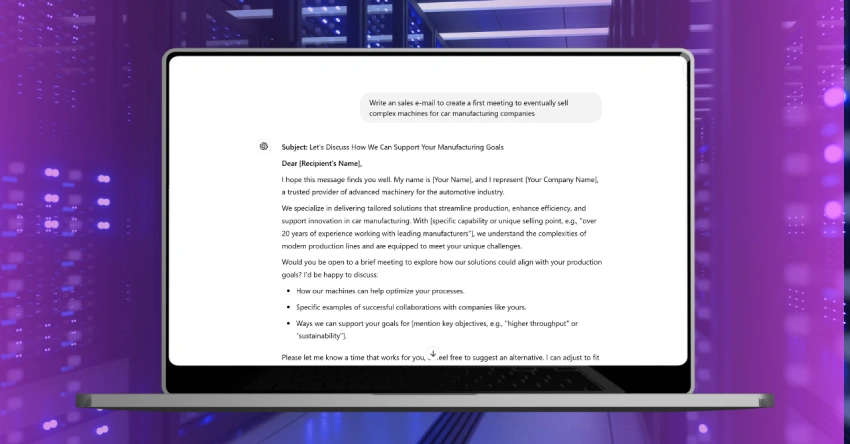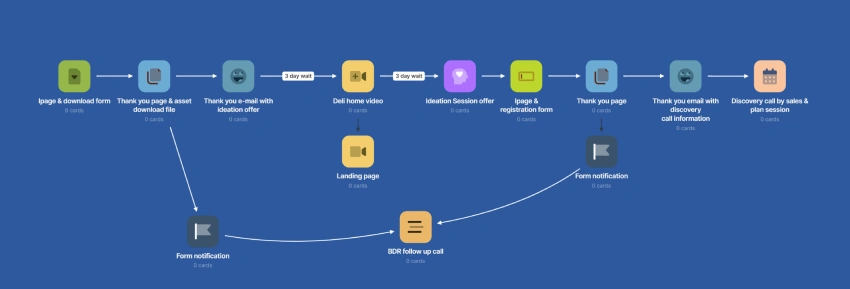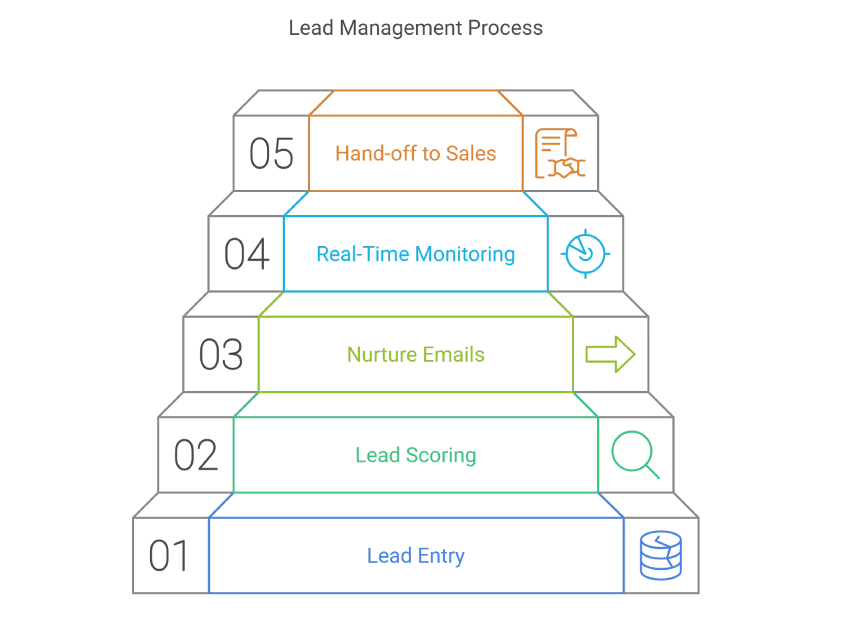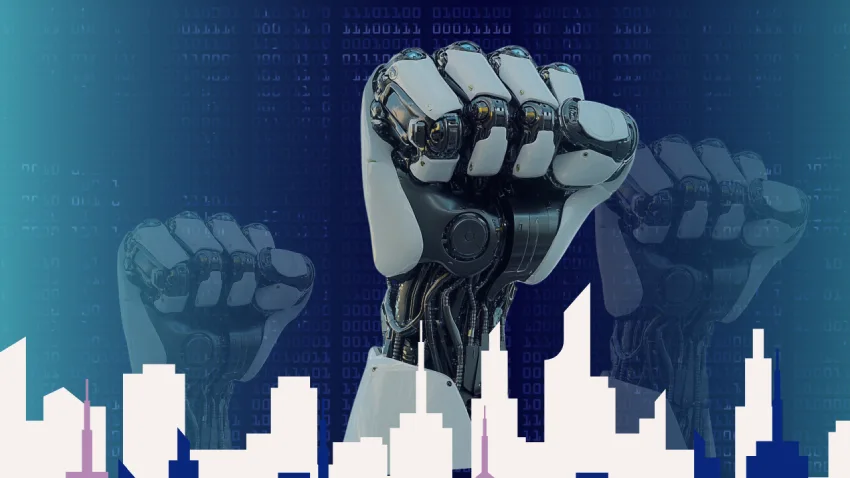The relationship between businesses and their customers is undergoing a seismic transformation, and at the heart of this revolution is artificial intelligence (AI). Just as the printing press revolutionized communication or the internet reshaped connectivity, AI is now redefining the way companies manage their relationships with customers.
Imagine a world where sales teams can predict the likelihood of a deal closing before making the first call, marketers can craft messages so tailored they feel like a personal letter, and customer service operates 24/7 without missing a beat. That world is not distant—it’s here, powered by AI-driven CRM systems. We must also be critical. Will AI deliver on its promise and will we keep an eye on what is important? The human-to-human relationship.
In this article, we’ll explore how AI is reshaping CRM with its predictive power for sales and marketing, its conversational capabilities for crafting messaging, and its automation prowess for efficient workflows. Drawing on research and insights—including our earlier article on The AI Revolution in CRM—this piece delves deep into the transformative impact of AI on customer relationship management.

The predictive power of AI in CRM
One of AI’s most remarkable contributions to CRM is its ability to predict customer behavior and outcomes with unprecedented accuracy. Through advanced data analytics, AI can analyze historical patterns, demographic data, and even external market factors to forecast sales, prioritize leads, and anticipate customer needs. AI is also already widely used to increase crm data quality by automatically enriching it.
🧙♂️An important note must be made here.
AI is still known for its occasionally unpredictable halucinatory ability. Moreover, there are always nuances due to context that AI may not know or be able to interpret as a human can. So you will always have to give appropriate weight to AI-generated analysis.
Sales forecasting and lead scoring
AI-driven CRM systems such as HubSpot’s predictive lead scoring or Salesforce’s Einstein AI empower sales teams to focus their efforts on high-value prospects. These systems analyze vast datasets to predict which leads are most likely to convert, enabling teams to allocate their time and resources strategically.
Now we must always be careful about this. Human control is and always will be necessary. Of course, you don’t want to miss opportunities because the algorithm interpreted CRM data just a little differently than you did.
Research insight:
According to a study by McKinsey, businesses that incorporate predictive analytics into their sales strategies see a 15–20% improvement in sales productivity. By predicting which customers are ready to buy or which products they might need next, AI doesn’t just save time—it boosts revenue.
Example in action:
A B2B software company implemented AI-based lead scoring, which identified warm leads from cold ones with 85% accuracy. This led to a 30% reduction in sales cycles and a 25% increase in deal closure rates.

Conversational power: AI’s role in crafting messaging
AI doesn’t just crunch numbers—it speaks to customers. Tools like OpenAI’s GPT models or AI-driven sentiment analysis engines are now instrumental in creating personalized, compelling messages for marketing and sales. Creating textual content with AI does represent one of the most widely used applications today.
Tailored marketing campaigns
AI analyzes customer behavior, preferences, and buying history to generate content that resonates with individual customers. For instance, AI can suggest subject lines for email campaigns, draft ad copy, or even recommend blog topics that align with trending customer interests.
Practical Example:
A good basic text for your marketing campaign can be converted directly into relevant marketing messages using AI. Think texts for landing pages, nurture emails and video scrips.
Sentiment analysis for better engagement
AI-driven sentiment analysis tools comb through social media mentions, emails, and customer feedback to gauge public opinion. This helps businesses fine-tune their messaging and address potential crises before they escalate.
Example in Practice:
A major airline used sentiment analysis to monitor real-time reactions during a social media campaign. When negative feedback spiked, the company quickly adjusted its tone, salvaging customer trust and maintaining positive engagement.

Automation: AI streamlining CRM workflows
AI’s ability to automate repetitive tasks is one of its most valuable contributions to CRM. By handling mundane tasks like data entry, follow-up scheduling, and email responses, AI allows teams to focus on high-impact activities and reach their CRM KPIs sooner.
Automated customer interactions
Chatbots powered by natural language processing (NLP) have become a cornerstone of customer support. These AI bots can resolve common queries, guide users through complex processes, and even handle complaints—all without human intervention.
Stat to note:
According to Gartner, by 2025, 80% of customer service interactions will be handled by AI. This shift not only saves costs but also improves customer satisfaction by providing instant responses.
Workflow optimization
AI can also optimize workflows by analyzing data to identify inefficiencies. For instance, it can recommend the best times to contact customers, predict potential bottlenecks in sales processes, or even suggest ways to improve employee productivity.

Example of an AI-created workflow integrating a CRM system
Scenario:
A SaaS company wants to nurture new leads generated from a free trial offer and convert them into paying customers. The AI-powered CRM system automates and personalizes the workflow to increase efficiency and improve conversion rates.
Step 1: Lead entry into the CRM
- Trigger: A user signs up for a free trial on the company website.
- AI Action:
- The CRM captures the user’s details (e.g., name, email, industry, company size) through the sign-up form.
- AI analyzes the lead data to classify the user into a persona category based on previous trial user behavior (e.g., “Small Business Owner,” “Enterprise Decision-Maker”).
Step 2: Lead Scoring and Segmentation
- AI Action:
- AI assigns a lead score based on factors like company size, engagement during sign-up (e.g., number of fields completed), and historical conversion data for similar leads.AI segments the lead into a nurture track based on their persona and score.
Example Segments:- High Potential Leads: Actively engaged trial users likely to convert.
- Low Potential Leads: Leads who completed minimal steps.
Step 3: Automated Nurture Email Sequence
- Trigger: New lead enters a nurture segment.
- Nurture Emails for a High-Potential Lead:
- Welcome Email (Sent Immediately):
- Subject: “Welcome to [Product Name]—Let’s Get Started!”
- Content: A friendly introduction with resources like a tutorial video or user guide personalized to the user’s persona.
- CTA: “Start Exploring Features Now.”
- Feature Highlight Email (Day 3):
- Subject: “Discover How [Key Feature] Can Solve [Pain Point]”
- Content: AI selects the most relevant feature for the user’s industry and provides a short case study.
- CTA: “Try This Feature in Your Trial.”
- Engagement Check Email (Day 7):
- Subject: “Need Help Maximizing Your Free Trial?”
- Content: AI-generated insights based on their activity (e.g., “We noticed you haven’t explored [Feature]. Here’s how it can benefit your business.”)
- CTA: “Schedule a Free 15-Minute Call with Our Expert.”
- Conversion Push Email (Day 10):
- Subject: “Unlock Premium Features Today!”
- Content: A special discount or limited-time offer to encourage subscription.
- CTA: “Upgrade Now and Save 20%.”
Nurture Emails for a Low-Potential Lead:
- Fewer touchpoints with softer CTAs, like inviting the lead to a webinar or offering a free e-book to re-engage interest.
Step 4: Real-Time Monitoring and Personalization
- AI Action:
- The CRM tracks email opens, clicks, and actions (e.g., signing up for a webinar, visiting the pricing page).
- AI dynamically adjusts the workflow based on behavior:
- If a lead clicks on an offer, AI schedules a follow-up email reinforcing the benefit.
- If a lead is unresponsive, AI pauses emails and triggers a “soft touch” action (e.g., retargeting with personalized ads).
- The CRM tracks email opens, clicks, and actions (e.g., signing up for a webinar, visiting the pricing page).
Step 5: Hand-off to Sales
- Trigger: Lead reaches a predefined score threshold.
- AI Action:
- CRM notifies the assigned salesperson with detailed insights, including:
- Most interacted emails and links.
- Time spent on specific features during the trial.
- Predicted objections based on past lead data.
- Sales receives a recommended script tailored to the lead’s persona and behavior.
- CRM notifies the assigned salesperson with detailed insights, including:
Benefits of This Workflow
- Efficiency: Automates repetitive tasks, allowing sales and marketing teams to focus on high-value interactions.
- Personalization: Tailors emails and interactions to each lead’s preferences and behavior.
- Scalability: Handles large volumes of leads without compromising quality.
- Higher Conversions: Combines AI insights with timely interventions to guide leads through the funnel effectively.
This workflow showcases how AI-powered CRM systems can seamlessly integrate automation, personalization, and data-driven decision-making, revolutionizing the way businesses nurture and convert leads.
AI’s impact on customer retention and loyalty
Retaining customers is more cost-effective than acquiring new ones, and AI is a powerful tool for boosting customer loyalty. By analyzing churn patterns, AI can alert businesses to customers at risk of leaving, enabling proactive engagement.
Proactive Retention Strategies:
AI can trigger follow-ups when it detects signs of dissatisfaction, such as reduced engagement or negative sentiment in feedback. Personalized retention offers—like discounts or loyalty perks—can then be deployed to keep customers happy.
Example in Action:
An e-commerce platform used AI to identify users who hadn’t made a purchase in six months. By targeting them with personalized offers, they achieved a 12% reactivation rate, significantly boosting revenue.
Challenges and ethical considerations
While the benefits of AI in CRM are undeniable, its integration isn’t without challenges. Data privacy, algorithm bias, and over-reliance on automation are critical concerns. Businesses must prioritize transparency, ethical AI use, and human oversight to ensure their AI strategies are effective and responsible.
Balancing automation with personal touch
Though AI excels at efficiency, customers still value human interaction. Finding the right balance between AI-driven automation and personal engagement is key to maintaining trust and fostering meaningful relationships.
Looking ahead: The future of AI in CRM
The role of AI in CRM is poised to expand even further. Emerging technologies like generative AI, real-time customer journey mapping, and predictive sentiment analysis will redefine what’s possible.
Emerging trends:
- AI-powered AR/VR experiences: Enhancing customer engagement through immersive, AI-driven virtual interactions.
- Real-Time personalization: Using AI to adapt messaging and offers in real time, creating a dynamic customer experience.
- Self-learning algorithms: Continuous improvement in AI’s ability to analyze and adapt to new data without human intervention.

Conclusion: the AI revolution in CRM is just beginning
AI has become the cornerstone of modern CRM, transforming how businesses interact with their customers. From predictive analytics that drive smarter sales strategies to conversational AI that crafts personalized messaging, the applications of AI are as diverse as they are impactful.
As businesses harness AI’s power, they unlock unprecedented opportunities to understand their customers, streamline operations, and build lasting relationships. But the AI revolution isn’t just about technology—it’s about creating deeper, more meaningful connections in an increasingly digital world.
For those eager to stay ahead of the curve, the time to adopt AI-driven CRM strategies is now. The question isn’t whether AI will reshape CRM—it’s how far your business is willing to go to embrace the future.
Let’s not just watch the revolution unfold—let’s lead it.
For more on AI’s transformative impact on CRM, check out our earlier article on 7 Groundbreaking AI Applications in CRM.
Check out our top 3 CRM solutions for this month
Recommended Reading
What is a good CRM strategy and how do you set it up?
What is a good CRM strategy and how do you set it up? Tips and a CRM strategy checklist for your organisation
Customer Journey: a definition and more!
The Customer Journey refers to the path a prospect takes before making a purchase decision. Learn from our insights and examples!
The Guide to Successful CRM Deployment: Best Practices and Key Steps
In this blog article, we will explore the key steps involved in CRM deployment and some best practices to ensure a successful implementation.
Direct Marketing
Direct Marketing, the defenition and strategies to be successful with it in combination with CRM. Read our tips!
The importance of creativity in B2B marketing: the relationship between innovation and growth
The importance of creativity in b2b marketing is often underrated. With this article i show the benefits of creative marketing!
Marketing funnel: the ultimate guide to funnels (with a step-by-step plan)
With a marketing funnel, you convey the right message per phase in the customer journey. 🚦Set up your own funnel in 12 steps!
